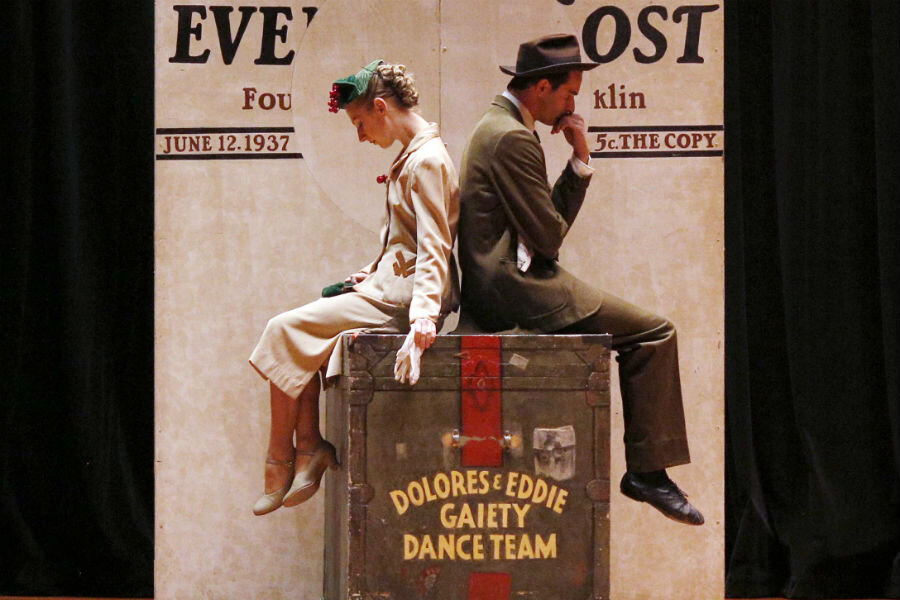Norman Rockwell's 'Which One?': Why it fetched $6.5 million
Loading...
Norman Rockwell’s gentle sendup of an undecided voter, “Which One? (Undecided; Man in Voting Booth),”sold Monday for $6.5 million in a Sotheby’s auction in New York, topping pre-auction expectations.
The painting depicts a man befuddled by the choice between the two main candidates in the 1944 elections, Democratic incumbent Franklin Delano Roosevelt and Republican Thomas Dewey – or maybe just befuddled by the whole business of politics itself. And for many Americans, Mr. Rockwell’s attitude toward his undecided voter lives on, even as decades of polarization may have made the artist’s ironic fondness seem like an unaffordable luxury.
The closest thing to Rockwell’s man today may be the “low-information voter.” Only 29 percent of American voters who were still undecided in the weeks leading up to the election, as UCLA political scientist Lynn Vavreck wrote for The New York Times in September, said that they paid attention to the news “most of the time.” Most are just not all that into politics.
Undecided voters "are less interested in politics and the news, less partisan, and less likely to hold opinions on issues dominating campaign discussions. Essentially, they think less about politics,” Dr. Vavreck wrote.
And many of them, she added, don’t really know what to believe about the campaign’s main issues.
“On the question of whether the United States should build a wall on its border with Mexico, a position central to Mr. Trump’s campaign for over a year, 28 percent of undecided voters are not sure whether they support or oppose this idea. That’s in contrast to only 7 percent of Mr. Trump’s committed voters (and 11 percent of Mrs. Clinton’s).”
There’s also a good many undecideds who are actually “disgruntled partisans,” noted The Christian Science Monitor’s Peter Grier this month, in contrast with the Rockwellesque image. That might help explain the large numbers of "undecided voters" going into the Nov. 8 election, where both major-party candidates were historically unpopular.
Every so often, though – say, every second presidential debate – someone appears on our media radar who seems to fulfill our highest hopes for an undecided paragon. Someone who seems to trust in the good intentions of both candidates and esteem the importance of his or her own ballot-casting. Someone, in other words, who treats politics as if it works the way it’s supposed to.
In 2016, America got that person in Kenneth Bone of Bellville, Ill., who briefly became America’s red-sweatered sweetheart when he asked Hillary Clinton and Donald Trump a sensible question about how to transition from fossil fuels to clean energy while minimizing harm to fossil-fuel workers, as if 2016 had been a year of sensible debate on such matters.
“Most voters already know where they stand on climate change – and have chosen their candidate accordingly. That means further debate on the topic wouldn't necessarily add value,” wrote the Monitor’s Ellen Powell after that debate.
“A recent Pew poll found that almost half of Trump supporters say natural patterns are causing the Earth to warm, and 30 percent are not convinced that the Earth is warming. This compares to 70 percent of Clinton supporters who say warming is ‘mostly because of human activity.’”
That was part of the allure, for Mr. Bone’s fans. His appearance invited a storm of memes on social media about “the human version of a hug” who went about snapping photos of the debate stage with a disposable camera.
“I try to be a friendly guy and shake hands and smile and all that,” he told the Washington Post. “And to see me try to be that huggable, likeable guy in the middle of a really nasty and divisive debate, I think, stood out to a lot of people.”








